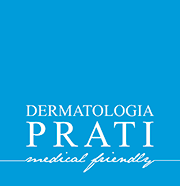What is late acne?
Acne is an inflammatory dermatosis of the skin and affects the hair follicle and its associated sebaceous gland. It mainly occurs during adolescence (age 17 more or less predicts the peak of the condition); in this case it is called juvenile acne but it is by no means ruled out that the problem may also occur in adulthood, between the ages of 20 and 40, which is why it is called late acne.
It is estimated that about 15% of the women and the 3% of the men suffer from this type of acne, recognizable by the presence of subcutaneousmicrocysts, enlarged pores, blackheads, pimples on the face and pimples under the neck, dull and dull skin, shiny and oily appearance in the T-zone of the face contrasted with drier and dehydrated skin in the rest of the face.
The manifestations oflate acne in adulthood are also flanked by phenomena characteristic of progressive aging such as thickening of the stratum corneum (hyperkeratosis), loss of radiance and softness, uneven complexion (dyschromia, hypermelanosis) and wrinkles.
In any case, always see a dermatologist who can analyze the problem and make the right diagnosis.
Symptoms of late acne
The most common late acne symptoms that develop mainly on the lower part of the face, chin, near the ears and also on the neck are:
- seborrhea (overproduction of sebum, fat, by the sebaceous gland and gives the skin a shiny appearance especially in the T-zone of the face)
- comedones (the basic manifestation of acne, an enlargement of the hair pore into which hair, fat, and melanin go. The appearance is black, in fact the blackhead is more commonly called a black spot because the pore is still open and in contact with air takes on the dark coloration)
- papules and pustules (or pimples, and are the evolution of an inflamed closed comedone. Papules are inflammatory, subcutaneous hard, painful lesions. Pustules are an evolution of papules with the addition of pus or yellowish material on top)
- nodules and cysts (nodules are inflamed lesions capable of causing pain and redness with eventual skin tearing and posthumous scarring; cysts are subcutaneous formations of pus or yellowish material that are painful to the touch and persist for weeks).
Causes late acne
First, it should be pointed out thatlate-onset acne is related to a genetic predisposition of the skin that reacts to stress and fatigue with the appearance on the face and body of blackheads and papules.
So the main cause oflate acne is a situation of mental and physical stress, a time laden with tension and worries to which your body may react in different ways, including precisely the appearance of painful boils and nodules.
Commonly, the presence of Pimples, pustules and panointed blacks in adulthood is believed to be a consequence of a hormonal dysfunction or gynecological pathologies, actually very often the amount of hormones circulating in a person with pimples and pustules is the physiological amount, but the sebaceous glands are not functioning perfectly, they become enlarged and produce more sebum, which is why it is much easier for thelate acne is caused by ahypersensitivity of glands sebaceous rather than from hormonal problems.
How to get rid of late acne
Before proceeding to do-it-yourself treatment as well as self-diagnosis of the condition, consult an expert, a dermatologist, who can analyze the situation and prescribe a suitable therapy.
Certainly a smog-filled environment and smoking do not help your skin feel better, but before using lotions and creams seek advice from a specialist who will be able to indicate, depending on the severity of the problem, suitable products and medications.
If you believe you are suffering from late acne and want to find a solution to your skin problem, contact our dermatology office at 212 Via Cola di Rienzo, Rome (Prati area) or contact us and book a consultation.

